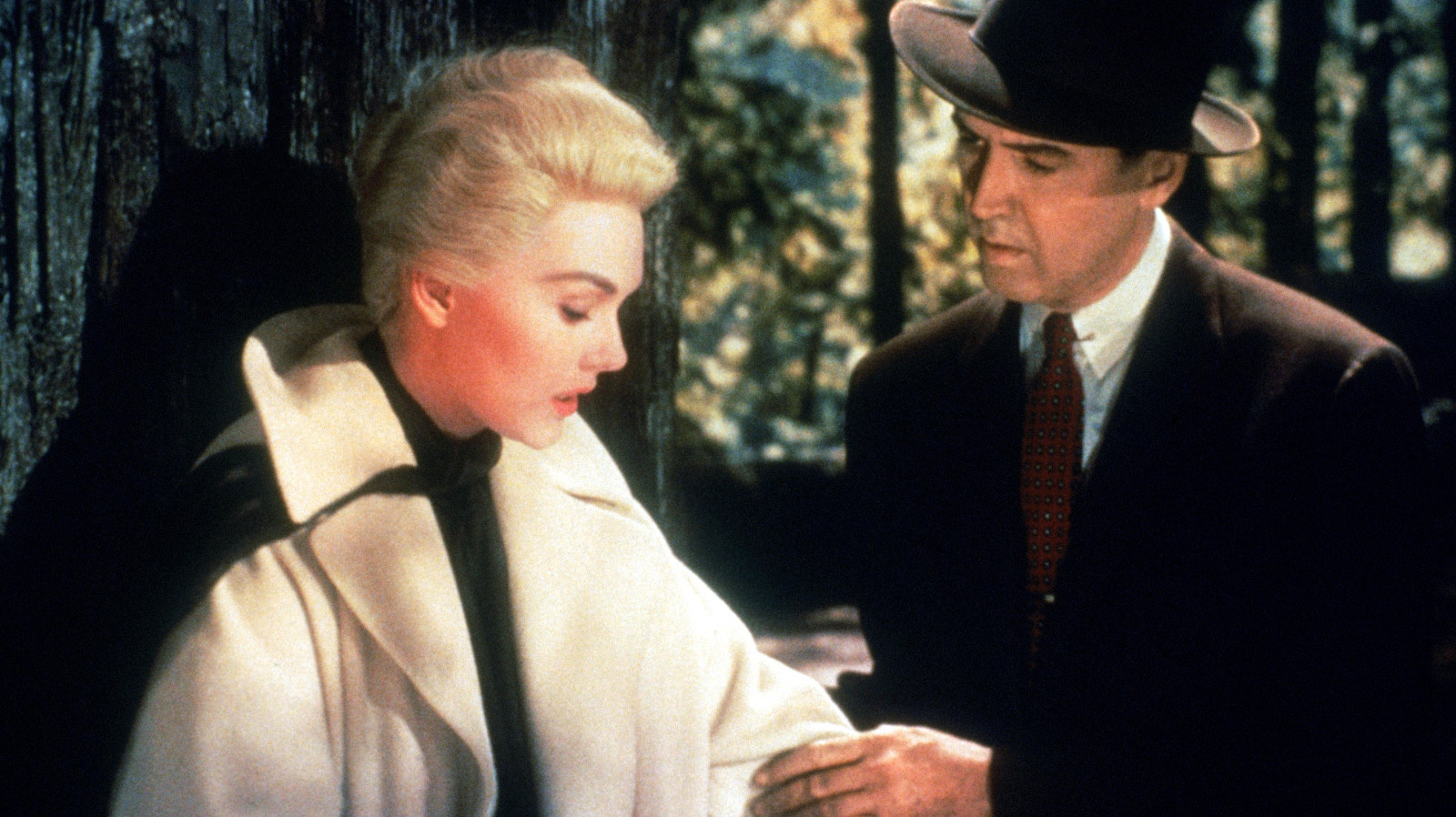
“The husband was planning to throw his wife down from the top of the tower,” Hitchcock explained. “But how could he know that James Stewart wouldn’t make it up those stairs? Because he became dizzy? How could he be sure of that!?”
He’s sort of got a point. It does feel a tad unrealistic for a schemer like Elster to rely so heavily on the assumption that Scottie’s dizziness would prevent him from discovering the ruse. If you’re going to kill your wife, there are probably safer ways to do so than hiring a doppelganger actor to seduce a PTSD-struggling detective. The movie treats the scheme as a work of genius, one that achieves its goal of making Scottie believe he’s a witness to Madeleine’s suicide, not murder, and which successfully puts the law’s suspicion firmly on Scottie for his incompetence, not on Elster. Sure, Scottie doesn’t go to jail or anything for what happened, but the fact that it’s him being questioned afterward is meant to highlight how cunning Elster is supposed to be.
But although Hitchcock and his critics are right in that this scheme doesn’t hold up to scrutiny, most modern critics agree that it doesn’t really matter. The thematic questions raised by the revelation that Scottie’s basically fallen in love with a fake person, which results in him spending the rest of the film obsessively trying to turn Judy into a woman who technically never existed, are so interesting that the logistics are hardly relevant. “Vertigo” is a chilling tale of a man’s pyrrhic attempts to make his idea of a perfect woman a reality, with devastating consequences for pretty much everyone involved. For those who feel “Vertigo” is the greatest film of all time, a few lapses in realism are beside the point.

